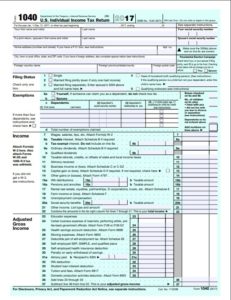Ah, April. Everyone’s favorite time of year, am I right? I mean, what American doesn’t want to pull out bunches of records and statements and devote several hours to filing taxes. Thankfully, the sting of having to file has been lessened thanks to the advent of tax preparation software (we, for example, have been using the same one for 18 years), but it’s still a lot of work.
Add to that this thought: you may have a bad strategy (or worse, no strategy) for your taxes. For us, our old strategy seemed to work out fairly well for many years; we’d get our large refund, and all would be right with the world. But is that the best way to handle your tax situation? Was it the best way for us? I would say no, and furthermore, I would say that getting those big refunds we used to get was a big mistake for us.
What do you mean, big mistake?
So…what’s so bad about getting a large amount of money back from Uncle Sam? Well, it comes down to this for us: do we want to use our money during the year – depending on cashflow for our single-income family, we may just want to add that to the monthly budget – or do we want to give our wonderful state and/or federal government an interest-free loan for a few months?

And, as it turned out, we wanted to earn what little we could from that money ourselves by saving it. That, or, we could have had a little bit more in our budget to spend.* But either way, it was our money to use as we wished.
So what did we do?
You will probably have to do a little homework to figure out how much money you ought to pay in payroll taxes with each paycheck in order to minimize your refund. Here’s what we did:
- We started by finding our most recent tax return. Because we do use tax preparation software, we had ours handy as a PDF.
- We figured out about much we would deduct (we itemize, and the amount is pretty consistent year to year) and figured out roughly what our Adjusted Gross Income (yes, the IRS capitalizes this term) would be for this year.
- We looked up the tax table (conveniently available here, courtesy the IRS) to figure out about how much we would owe this year, and then compared it to what was withheld last year.
- Upon finding that we would owe way less than what was withheld, I (again, my wife does not draw a salary**) filed a new Form W-4 with my employer. Now, the W-4 has its own worksheets to determine how many allowances you should claim; each allowance reduces your withholding. However, it has been my experience that claiming the number of allowances that the form’s worksheets say I should ends up giving me that huge refund at year’s end. Therefore, I always claim one or two more allowances than the form says I ought to claim. And guess what? There is absolutely nothing unlawful in doing that, as long as I don’t end up owing too much at the end of the year. But since I was getting a huge refund before this change, one or two more allowances didn’t leave me owing at the end of the year at all; it just gave me a much smaller refund, which is what I wanted anyway.
A warning if you file state taxes!
For those of you who, like me, are fortunate enough to live in a state that collects income tax as well, be aware that the number of withholding allowances you claim affects not only your federal withholding but also your state withholding. (At least, this was the case for me.) This is a problem in my state, which charges a flat percentage of annual income and doesn’t allow for much in the way of deductions. We were on track to owe enough to the state at year’s end to trigger a penalty.
Luckily, our state (and probably yours as well) allows for estimated taxes, just the same as the federal government. And we didn’t even have to follow a quarterly schedule in my state; for example, last year we made two estimated tax payments. This turned out to be just right, as our tax liability to our state, once we finished our 2017 taxes, was just $5. We probably could have prepaid a bit less and paid more now, but this was the first year we had prepaid anything, so we may adjust as we go along. (Either way, we ended up keeping more of our money for a longer time than if we had simply paid it to the government with each paycheck.)
And that’s what’s great about this system: you can determine how much extra you want to get in your paycheck and balance it against how much you want to receive, or pay, to federal and state treasuries in April next year. But do your own homework, and I bet you’ll be happier with the way your taxes work out for you next year.
* Whether putting the extra into our budget instead of saving it was a good idea is a question for another post.
** But she definitely works harder than I do.
Note: this post may contain affiliate links. View my affiliate link disclaimer here.